Virtual & Augmented Reality
Virtual Reality (VR) in classrooms can reform education and contribute fundamentally to successful global collaborations, especially in accomplishing the United Nations’ Sustainable Development Goals (SDGs). For this discussion, we should zero in on utilizing Google Earth Visits in K-12 education to address the Global Goals I’ve accomplished for my project, Global Goal 4: Quality Education.
Global Goals 4 expects to guarantee comprehensive and impartial quality education and advance deep-rooted learning open doors for all. VR devices like Google Earth Visits can assume a significant part in gathering this goal by giving vivid and intuitive growth opportunities that rise above customary study hall limits.
Google Earth Visits

Google Earth Visits is an instructive apparatus that permits instructors and students to investigate the world practically through 360-degree all-encompassing pictures. It will empower students to “travel” to different areas and experience virtual field trips. By utilizing VR headsets, for example, Google Cardboard or the Oculus Mission 2, students can feel present in those areas, regardless of whether they are many miles away.
Within this video provided by Google, we are able to look into the way Google Earth working with VR shapes our experience.
Upgraded Global Collaborations
VR can break social obstructions and cultivate multifaceted comprehension. By encountering better places, societies, and networks through VR, students can foster sympathy and appreciation for variety, prompting more agreeable Global coordinated efforts. VR can also work with constant cooperative tasks among students worldwide. For instance, students from various nations can collaborate on a virtual recreation of verifiable destinations or work together to tackle worldwide difficulties like environmental change or ecological preservation. Next, VR can establish language learning conditions where students can work on talking and listening abilities with local speakers from various nations, advancing language capability and intercultural correspondence. And finally, Through VR encounters, students can acquire a more extensive point of view on worldwide issues like poverty, inequality, and environmental degradation. This understanding can motivate them to become proactive worldwide residents and work together to address these difficulties.
Meeting Global Goal 4 – Quality Education
VR innovation permits students in underserved regions or far-off areas to get instructive encounters they probably won’t have. Virtual field excursions to galleries, verifiable destinations, and regular marvels can enhance their learning and advance a more comprehensive school system. Also, VR gives a seriously captivating and intelligent learning climate, which can improve students’ maintenance and comprehension of perplexing themes. It can make learning fun, starting interest and adoration for learning. VR can take special care of assorted learning styles, furnishing customized opportunities for growth to students with various capacities and learning inclinations. This inclusivity lines up with the rule of abandoning nobody, as underlined in the SDGs. And finally, VR can likewise be utilized for proficient improvement for instructors, empowering them to encounter new showing techniques, best practices and team up with teachers worldwide. This constant learning can work on the nature of schooling conveyed in homeroom.
Within a lesson plan employing Google Earth’s wonders, we have been given the following instructions…
“Teachers can use I’m Feeling Lucky and Street View in Google Earth to randomly select a location in the world and relate it to multiple content areas. Teachers can also choose to preselect a location that lends itself well to relevant standards and objectives using Search or Voyager Stories.”
https://storage.googleapis.com/gweb-earth/education/pdf/EN_PassportWarmUp_7thGrade.pdf
This captivating lesson, accompanied by its counterparts found within the provided link, seamlessly integrates the power of VR and Google Earth, culminating in a plethora of thrilling educational experiences for young minds.

Utilizing Google Earth Visits or comparative VR apparatuses in homerooms can add to practical worldwide joint efforts and accomplish Worldwide Global 4: Quality education. By cultivating compassion, breaking social boundaries, and giving admittance to different learning potentials open doors, VR can engage students to become dynamic members intending to worldwide difficulties and pursue a manageable future.
Mental Health in Classrooms
Mental health is critical to students’ general prosperity and scholarly achievement. Students’ mental health can be supported or challenged by the environment in their classroom. It is imperative for educators to pay close attention to the mental health of their students and to foster a supportive environment that encourages emotional well-being. Teachers can positively impact students’ lives and help them succeed academically and personally by addressing mental health in the classroom.
We.schools.org has brought light to the attention of mental health for students and the importance of it. (On the right.)

Establishing a protected and comprehensive homeroom environment is urgent for supporting students’ emotional and mental health. Students can develop an environment where they feel at ease expressing their feelings, sharing their experiences, and seeking assistance when needed. Undivided attention and compassion are fundamental abilities for educators, permitting them to recognize indications of pain or psychological well-being worries in their understudies. Teachers can foster open communication and make students feel valued and understood by being approachable and non-judgmental.
We.schools offers a variety of modules for anyone to look into.

They say,
“Engage students in issues related to the theme of Health and Well-being. Here you will find topics like mental health and well-being, bullying and cyberbullying, nutrition, physical health and healthy relationships.”
Through scrolling, you are able to scroll and examine different modules that relate to Healthy relationships, Mental Health & Wellbeing, and Nutrition (as well as bullying, clean water, and physical health.)

Executing mental health schooling inside the educational plan is indispensable to supporting understudies’ prosperity. Teachers can teach students valuable skills for effectively navigating their emotions by incorporating emotional intelligence, stress management, resilience, and self-care lessons. Teachers can help their students prioritize their mental health by teaching mindfulness techniques, promoting healthy coping strategies, and providing resources for mental health support.

The advantages extend beyond the classroom when teachers actively support students’ mental health. Students are more likely to develop a positive attitude toward learning, exhibit improved academic performance, and have better overall life outcomes when they feel emotionally supported and understood. Teachers can assist in preventing potential difficulties from growing and provide students in need with the necessary support and resources by addressing mental health issues early on.
The classroom-based modules that weschools offer fosters collaboration, empathy, and genuine care for and with others by bringing together a profound sense of oneness. The purpose of these transformative modules is to instill a profound appreciation for the interconnectedness of the classroom community.
Students are encouraged to recognize that they are part of a larger whole and that their thoughts, actions, and well-being are intricately linked to the well-being of their peers by embracing the concept of oneness. By eliminating divisions and encouraging inclusion, this understanding fosters a sense of unity and belonging. Understudies figure out how to commend the variety and worth of every individual’s one-of-a-kind points of view and encounters in the aggregate learning space.
Inside this supporting climate, cooperation becomes the dominant focal point. Understudies are urged to cooperate, consolidating their assets and gifts to accomplish shared objectives. They know that a team’s progress is more important than a person’s success. Through collaborative projects and activities, students can learn essential skills like effective communication, active listening, problem-solving, and compromise.
Greater empathy is naturally developed in students who participate in collaborative learning experiences. They figure out how to genuinely see and grasp their companions, perceiving the everyday human encounters that tight spot them. Through dynamic sympathy, understudies foster the ability to focus on others. They listen mindfully, approve feelings, offer help, and try to grasp alternate points of view. Within the classroom community, acts of kindness, compassion, and support become second nature.
Educators are essential in encouraging unity, coordinated effort, and care. They make a safe and sustaining space where understudies feel open to putting themselves out there and embracing weakness. Teachers encourage students to emulate these characteristics by modeling them for them. They facilitate opportunities for students to connect on a deeper level, encourage active participation, and encourage open dialogue. Instructors and mentors encourage understudies to become humane and drawn-in homeroom local area individuals through their direction and mentorship.
The advantages of developing unity, cooperation, and care in the study hall stretch far past scholarly accomplishment. The fundamental life skills that students acquire will benefit them personally and professionally. They learn to esteem cooperation, regard different viewpoints, and explore clashes with elegance and understanding. The feeling of having a place and connectedness they experience cultivates good emotional wellness, versatility, and a more noteworthy identity worth.
Focusing on oneness, collaboration, and care in the classroom is truly transformative in a world that frequently emphasizes competition and individualism. It supports an age of people who grasp the force of solidarity, esteem the strength of aggregate exertion, and focus on the prosperity of others. These modules make an enduring effect, molding understudies into caring, sympathetic, and socially mindful people prepared to decidedly impact their networks and add to an agreeable and interconnected world.
Virtual Field Trip – I love it!
I was recently allowed to do something I have never done before… I went on a Virtual field trip. At first, I didn’t know what to expect. So stepping into this, I was excited.
I was greeted with a link that was provided. (Linked below)
https://sites.google.com/a/stockton.edu/gsdlc/virtual-field-trips
And from there, I was given many options. I found interest in many things that I was scrolling past, but two caught my eye.
A LIVE ZOO ANIMAL WEBSITE & A PLANETARIUM


I was so excited about the live zoo footage, just being able to glimpse the animals’ daily lives. The elephants immediately caught my eye because they are my favorite. There are 7 elephants, Spike, Bozie, Kamala, Swarna, Maharani, Trong Nhi, and Nhi Linh. Here, you can see an elephant (I’m not sure which one) simply chilling and gazing upon something.
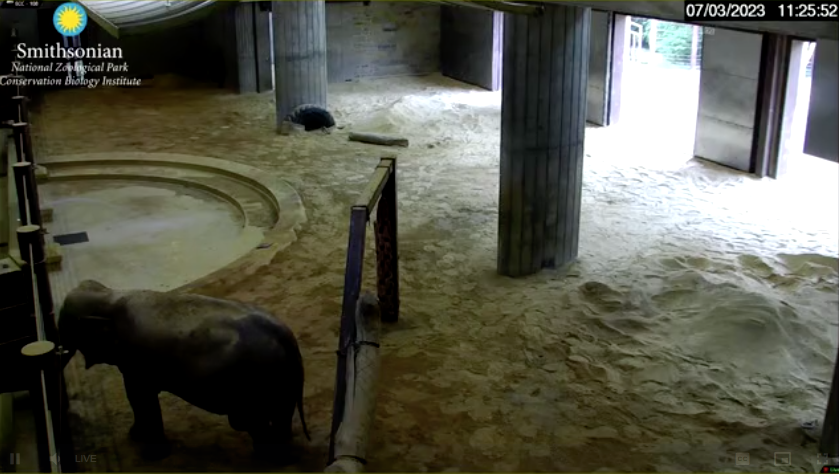
If you’re interested in getting an inside look into the life of these animals, I wouldn’t be afraid to click the link. Sometimes we forget that we are not the only species on this Earth. And it’s interesting to see how another species operates. The range of animals that they show is Elephants, Pandas, Lions, Black-footed Ferrets, and Naked mole rats.
Onto the planetarium, it’s labeled “An online planetarium that allows users to explore stars and planets across a roving map. A very cool instrument to encourage students to learn more about outer space.” From the first glimpse, you get an open field, but when you scroll above you, the sight is beautiful.
By clicking whatever floating item you see above, you’ll get a rundown of precisely what it is.

Virtual field trips are agreeable because of multiple factors. Right off the bat, they offer openness that conventional field trips can’t coordinate. These virtual encounters permit people to investigate far-off and distant areas, far-off everyday marvels, or verifiable milestones. Virtual field trips open up a world of possibilities by removing the constraints of physical travel, allowing people to visit places they might not have been able to otherwise. Second, virtual field trips are intended to be interactive, actively involving and immersing participants in the experience. Clients frequently have command over the course and speed of their investigation, empowering them to tap on objects for more data or participate in virtual exercises and recreations. This hands-on approach enhances the trip’s excitement and fosters a sense of discovery.
With many virtual outings accessible, covering different subjects like nature, history, artistry, and science, there is something to enthrall everybody’s inclinations. This variety ensures that there is always something new and intriguing to discover, keeping the experience fresh. Ultimately, the adaptability and comfort of virtual field trips upgrade their pleasure. Members can leave on a virtual experience whenever suits them without stressing over movement-coordinated operations or time limitations. This freedom permits individualized exploration and revisitation of exciting locations. In conclusion, virtual field trips are a fun and engaging way to learn about and explore the world around us because they combine accessibility, interactivity, multimedia elements, novelty, variety, and convenience.

Subtitles Bringing Us Together
Have you ever been interested in a show that suddenly popped up on your timeline? The characters look interesting, the plot looks deep, and the overall vibes of the show give off something that you’d definitely watch. But when you look up the show for yourself, you feel disappointed because it is in a language you cannot understand. You immediately sigh (or however else you like to put out your frustrations). But then you see a button at the bottom right. The CC (closed captions) button gives you a sense of hope. And when clicking it, you see that it offers subtitles in your language. You feel happy knowing that you can actually watch the show now.
.. You’ll just have to balance out reading the subtitles and watching the show at the same time somehow.
In films, television shows, or videos, subtitles are a textual representation of the dialogue or narration shown on the screen to help viewers comprehend the content. They are accommodating for people who are hard of hearing or deaf, as well as for people who might not be fluent in the language used in the audio. Closed subtitles are optional and can be accessed through a specific setting, whereas available subtitles are permanently displayed. Subtitles can be opened or closed. They ensure that viewers of all backgrounds and abilities can fully engage with the visual media and comprehend the spoken words by providing an inclusive viewing experience.
When I think of subtitles, there’s a specific show that comes to mind that I watched when I was a kid (I kinda do now, too, now that it was picked back up.)
Miraculous: Tales of Ladybug & Cat Noir

Miraculous: Tales of Ladybug and Cat Noir is an animated television series that captivates audiences with its thrilling adventures and charming characters. Set in the vibrant city of Paris, the show follows the dual lives of the two main characters, two high school students who become heroes when evil threatens their city.

Miraculous is well-known for its captivating plot and engaging characters. The show’s French heritage is reflected in a variety of cultural elements. Miraculous has gained popularity all over the world, including in the United States, but it retains distinct cultural features that distinguish it from American culture. The natural landforms, physical surroundings, social cues, cultural influences, economic circumstances, and politics of Miraculous are the focus of this essay’s investigation of the city’s cultural aspects.
Most of the action in Miraculous takes place in the charming French city of Paris. The show does a beautiful job of capturing the essence of the city by showcasing iconic landmarks like the Eiffel Tower, the Louvre, and the beautiful Seine River. The series’ streets, urban environments, and architectural styles align with the romantic and picturesque appeal frequently associated with Paris. By incorporating French culture and language, Miraculous displays cultural influences. The characters’ frequent use of French words and phrases emphasizes the significance of French culture and language. French social etiquette is reflected in the manner in which people interact.
In addition, the show places a significant emphasis on fashion, with characters donning outfits and styles reminiscent of Paris, highlighting the series’ cultural influences even more. Miraculous indirectly reflects certain aspects of French society, even though it focuses primarily on the superhero story and does not extensively examine economic or political issues. The significance of cultural heritage and the preservation of historical landmarks is emphasized, demonstrating how important these aspects of French culture are. A wide range of mythological and cultural elements worldwide influences Miraculous. These influences represent the global nature of the show’s narrative and are not exclusively French. A diverse and multicultural world that piques the interest of a wide range of people is created by incorporating elements from a variety of cultures, including Greek, Japanese, Chinese, and Egyptian. There are numerous ways that Miraculous differs from American culture. First, it differs from the American English used in American media by including phrases and language from France.
In contrast to the typical American settings frequently found in animated series, the show’s primary location, Paris, offers a distinctly European flavor compared to some American cultural norms, which may emphasize individualism and informality—miraculous places emphasis on formality, politeness, and cultural heritage. In addition, Parisian fashion trends exhibit a distinct style and influence compared to American fashion.
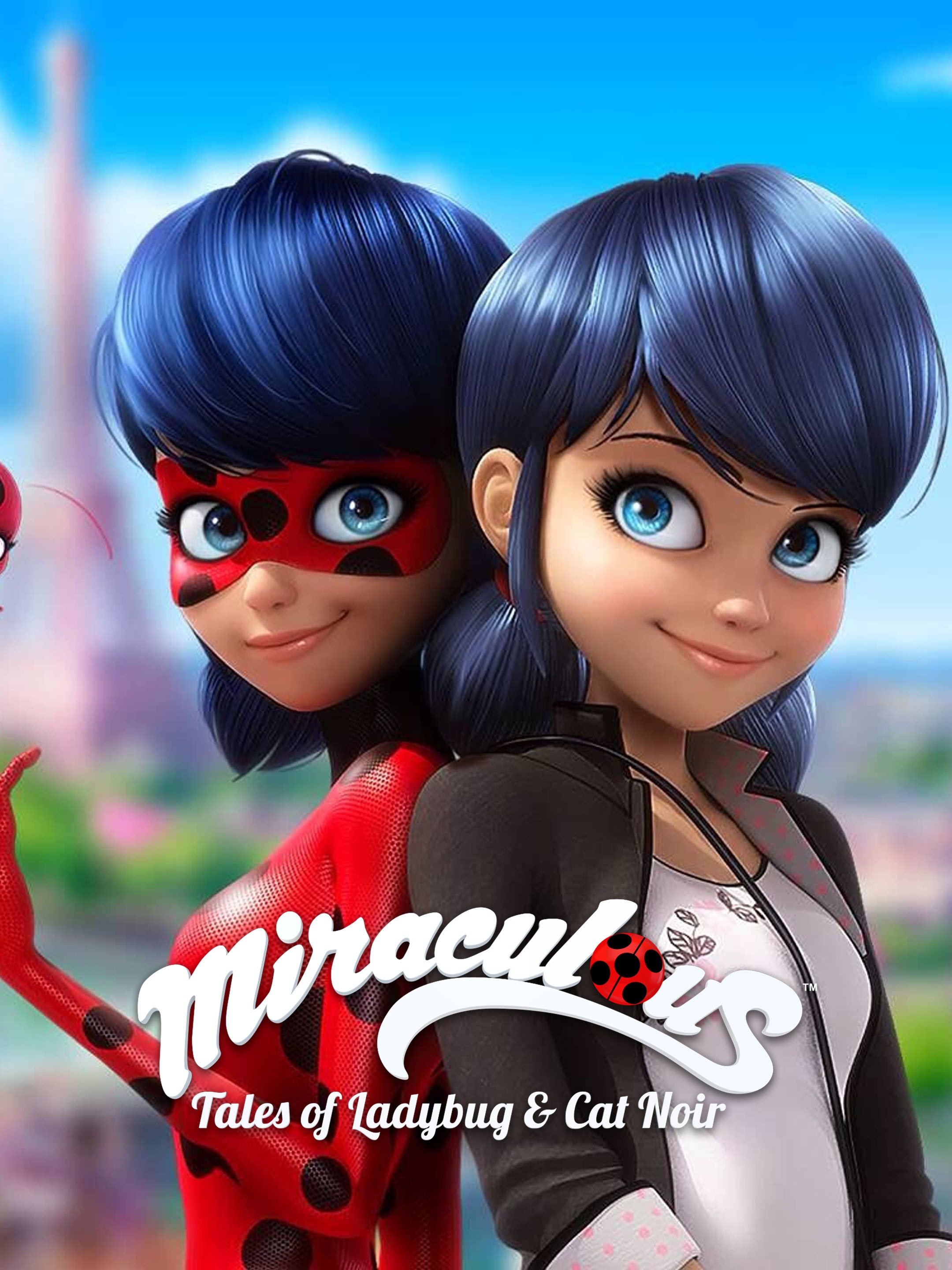
As stated before, the setting takes place in Paris, France, so it is a French cartoon. The show initially started in 2015 and began to gain recognition in the US to the point where Nickelodeon picked up the show and dubbed the language into English. But before that, there was the option to watch the show with English subtitles.
(as shown below)

thank you, plagg. Very cool.
We can comprehend better and appreciate a variety of forms of media thanks to subtitles. Subtitles are invaluable for overcoming language barriers and promoting inclusivity in all media, including movies, television shows, and even online videos. Subtitles’ significance and contributions to accessibility, cultural exchange, and media enjoyment are examined in this essay.
Subtitles can significantly improve comprehension, even for people who speak the language well. Subtitles ensure no subtle details are missed in scenes with heavy accents, whispers, or complex dialogue. They make difficult-to-decipher terms, slang, or technical jargon easier to understand. Additionally, subtitles aid in overcoming audio distractions, making it possible for viewers to comprehend dialogue amidst background noise or other audio disturbances. Subtitles are essential to the media landscape because they make content accessible, encourage cultural exchange, improve comprehension, and preserve artistic intent. They are necessary because they make it easier for people with hearing impairments to be included, help people learn languages, and let people worldwide enjoy diverse content. We can foster a more inclusive and interconnected society in which everyone has the opportunity to enjoy and comprehend media in all of its linguistic and cultural richness by recognizing and appreciating the significance of subtitles.

Diving into the Pages: The Transformative World of Immersive Reading
Immersive reading opens doors to unending worlds where the power of words transcends space and time. We are invited to step into the characters’ shoes on the journey, suspend reality, and investigate captivating narratives that pique our imagination. Immersive reading provides a haven to fully immerse ourselves in a story in a world with constant distractions and short attention spans. We embark on transformative adventures that expand our minds, elicit empathy, and transport us to realms only limited by our imagination, whether we do so through the pages of a book or the screens of our devices.

I’ve recently read up on different ways of communication. Here in the 21st century, we have an immense amount of technology that allows us to transform the simple things we do into something completely different. Immersive reading ignites a fire within us that only a good book can, transporting us to far-off lands, igniting our imagination, and introducing us to captivating characters. It allows us to explore the depths of our emotions and provides solace, inspiration, and an escape from the chaos of everyday life. Immersive reading is a gift that keeps giving because it never ceases to bring us joy and wonder.
Scanning words on a page is not enough to define immersive reading. It requires readers to fully immerse themselves in the plot, setting, and characters by engaging with the text. It is a state of flow in which the words transport us to various eras and locations and give the impression that time has passed. The key is suspending our disbelief and deeply connecting with the story, whether in a gripping novel, informative non-fiction book, or interactive digital reading experience.
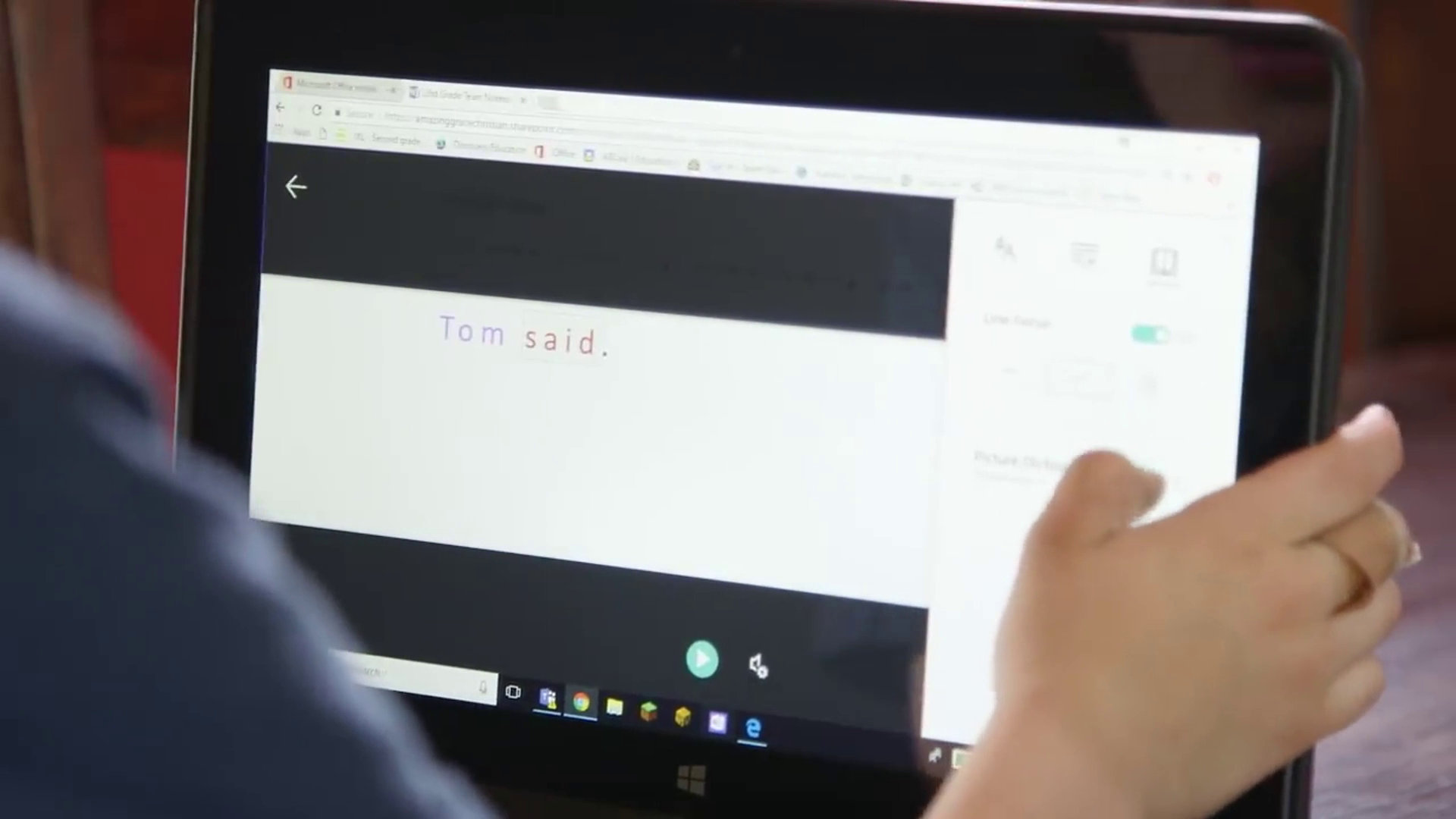
Immersive reading tackles the influence of our creative mind, permitting us to summon clear mental pictures and submerge ourselves. On the other hand, reading requires active participation in contrast to other forms of entertainment, such as movies or video games, in which visuals are presented to us. We develop a sense of ownership and personalization of the story by imagining scenes, characters, and feelings as we read. Exercising our imagination broadens our creative thinking and creates a one-of-a-kind connection to the author’s words. Immersive reading fosters empathy by putting us in the shoes of various characters and experiencing their joys, sorrows, and struggles. It helps us develop compassion for others and broadens our perspective, ultimately making us more empathetic. Navigating intricate plots and storylines also encourages analytical thinking, problem-solving, and critical thinking skills. Additionally, it enhances cognitive development by enhancing vocabulary, language fluency, and communication abilities. In addition, even though traditional print books have long been the primary medium for immersive reading, technology has provided new means of engagingly interacting with stories. Innovative features like synchronized audio, animations, and annotations that enhance the reading experience are available in interactive reading apps, e-books, and audiobooks. In addition, virtual and augmented reality is used to create immersive reading environments where readers can explore fictional worlds in novel ways.
There are many creative options available with immersive reading. Join book clubs or conversation gatherings to share and investigate alternate points of view. Host literary events or organize themed reading challenges to immerse yourself in literature fully. To enhance the reading experience, try interactive book adaptations or multimedia integration. Consider attending reading camps or retreats to immerse yourself in books while avoiding all other distractions. Discuss book-to-stage or book-to-film adaptations or use your reading experiences to inspire creative writing. These novel approaches make immersive reading a gateway to new experiences and opportunities for self-expression.
Microsoft introduced the cutting-edge instrument known as the Immersive Reader to make reading accessible and inclusive to people of all abilities. Immersive Reader is a game-changing feature available in several Microsoft applications and platforms, including Microsoft Edge, Microsoft Office, and Microsoft Teams. It was designed to improve literacy skills, comprehension, and engagement. Thanks to its potent features, immersive Reader has become a catalyst for inclusive education, enhancing reading experiences and empowering individuals with diverse learning needs.
In the link below, Microsoft officially launched its Immersive Reader usage.
https://www.youtube.com/results?search_query=microsoft+immersive+reader

By fostering empathy, promoting global understanding, and empowering individuals to reach their full potential, immersive reading has the potential to reshape our world. It will change education forever by encouraging creativity and critical thinking. Through different stories, it will connect social partitions and develop a more comprehensive society. Immersive reading will provide personal solace, motivation, and self-discovery opportunities. Immersive reading holds the key to a brighter, more enlightened future for everyone as more people embrace its transformative power.
A World of Peace for All
When we think of the word peace, there are many words that come to mind. Tranquility, calmness, and harmony. Peace should surround us in a world where we all work together. But instead, sometimes, we cause each other hurt and chaos. Learning how to bring peace to others and ourselves should be fundamental.

The United States Institute of Peace (USIP) is a non-partisan, independent federal organization that Congress established in 1984. Its primary goal is to stop, reduce, and end violent conflicts worldwide. The USIP is a national platform for leading examination, investigation, and preparation for peacebuilding and compromise.
Additionally, the USIP contributes to the nation’s understanding of conflict and peacebuilding. It studies topics like polarization, violence prevention, civil society’s role in promoting peace in American society, and other issues related to peace and conflict.
The USIP also creates opportunities as well. They state;
Through the Peace Teachers Program, teacher workshops, webinars, and other opportunities, educators can find support and training on how to incorporate peacebuilding themes and skills into their educational settings.
“Teacher Opportunities.” United States Institute of Peace, 2 Dec. 2021, www.usip.org/US-Schools/Teacher-Opportunities.
So, with this known, we can ask ourselves this question. How would a world that revolves around peace change the way that we live?
𝑰𝒏 𝒂 𝒘𝒐𝒓𝒍𝒅 𝒘𝒉𝒆𝒓𝒆 𝒑𝒆𝒂𝒄𝒆 𝒓𝒆𝒊𝒈𝒏𝒔 𝒔𝒖𝒑𝒓𝒆𝒎𝒆
People would handle issues and conflicts by talking and understanding instead of fighting.

Nations would cooperate to prevent clashes and help one another.

No matter where they come from or what they believe, everyone would have the same rights and opportunities.

We would be concerned about the environment and collaborate to ensure everyone has enough resources.

Schooling would be vital, teaching us to regard others and track down peaceful arrangements.
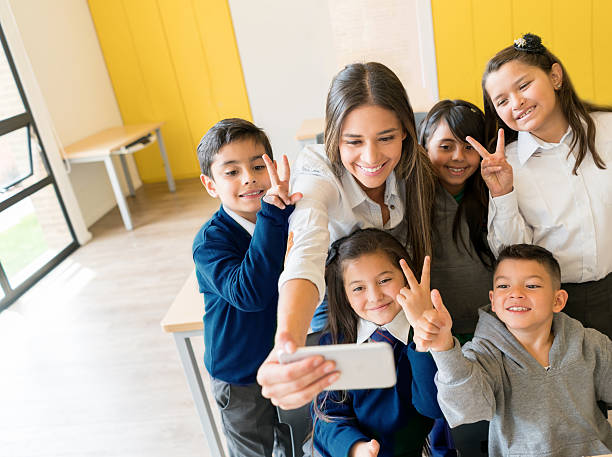
Rather than punishing people who do wrong, we would focus on aiding them and further developing things.

𝑷𝒆𝒂𝒄𝒆 𝒘𝒐𝒖𝒍𝒅 𝒂𝒍𝒍𝒐𝒘 𝒖𝒔 𝒕𝒐 𝒄𝒐𝒏𝒄𝒆𝒏𝒕𝒓𝒂𝒕𝒆 𝒐𝒏 𝒃𝒖𝒊𝒍𝒅𝒊𝒏𝒈 𝒂 𝒃𝒆𝒕𝒕𝒆𝒓 𝒇𝒖𝒕𝒖𝒓𝒆 𝒂𝒏𝒅 𝒊𝒎𝒑𝒓𝒐𝒗𝒊𝒏𝒈 𝒆𝒗𝒆𝒓𝒚𝒐𝒏𝒆’𝒔 𝒍𝒊𝒗𝒆𝒔 𝒂𝒏𝒅 𝒕𝒉𝒆 𝒘𝒐𝒓𝒍𝒅.

Overall, the USIP is working to bring us together as individuals and as one. We are all put on this Earth not only to care about ourselves, but about each other. And with the guidance that the USIP is giving to others, we are able to look forward to a future of peace.
Ananda Earlie
AI INTELLIGENCE IN OUR CLASSROOMS
As we progress into the new age of technology, we are prone to creating unique experiences that will benefit us in the future. These experiences are being brought to the newer generation. It’s been brought to where it all starts; In the Classroom.
The tweet above (and linked) brings forth the start of Artificial Intelligence and the future of teaching and learning. The Office of Educational Technology states as its core message:
” The U.S. Department of Education (Department) is committed to supporting the use of technology
to improve teaching and learning, and to support innovations throughout educational systems.”
Bringing Artificial Intelligence into schools and classrooms can benefit the students, teachers, and the education system. There are many possibilities to look upon, but here are the more important ones.
≿━━━━━━━━━━━━━━━━━━༺❀༻━━━━━━━━━━━━━≾
Personalized Learning Artificial Intelligence can tweak instruction for every student in view of their necessities and inclinations.

Smart Tutoring Systems powered by artificial intelligence can provide students individualized guidance and support, enhancing their learning and comprehension.

Improved Collaboration Tools for artificial intelligence can make it easier for students to work in teams, collaborate on projects, and learn from each other.

Streamlined Administration Administrative tasks like scheduling and grading can be automated by artificial intelligence, allowing educators to concentrate on teaching.

Informed Decision Making Artificial Intelligence can break down student execution, participation, and conduct information, giving bits of knowledge that assist teachers with pursuing better choices.

Accessibility and Inclusivity Artificial Intelligence can help understudies with special needs, offering customized help and versatile tech.

Teacher Development Artificial Intelligence can uphold teachers’ expert development by suggesting assets and giving criticism on their education procedures.

≿━━━━━━━━━━━━━༺❀༻━━━━━━━━━━━━━━━≾
Coordinating Artificial Intelligence in schools can further develop training quality, draw in students better, and support educators in their significant work.
And now, with this information in front of you, how do you feel about AI being a part of classrooms?
For more information about Artificial Intelligence in classrooms and what could be done, the hashtags #ArtificialIntelligence & #aiclassrooms are your links to go. ❤︎
Virtual Reality in Classrooms, What Fun!
As we may know, there is a significant rise in technology. Nowadays, technology can either be seen right in our own homes, right outside our windows, or in our own hands. With the rise of technology comes the inspiration for new ideas. We all love our phones. We all love playing games on our phones, reading, writing, and even watching movies on our phones. And now, thanks to new technology, there is a way to bring all that to us in a new fun experience.
Virtual Reality, better known as VR, is precisely how it sounds. A reality that is not real but is made to be with the hard work of professionals. With these new experiences, millions of people have begun to submerge themselves in the newfound experience. Being able to go for a run right in the comfort of your own home doesn’t sound too bad. But, with more work, there is a way now that not only adults but children are able to experience and learn new things, even in a classroom. VR is the future of our classrooms.

With the rise of Virtual Reality in classrooms, there are bound to be people who would prefer to avoid the idea of technology running the classroom. They may be scared that their children will become addicted to technology. Or they are afraid that technology does not teach as well as actual humans do. While these are valid concerns, VR can bring many offers to students.
The article states,
“Students expressed enthusiasm for learning with VR, with 87 percent of all responses indicating that the VR lesson was useful, enjoyable, and something students would like to learn with in the future “
Flynn, Catt, and Peter Frost. “Making VR a Reality in the Classroom.” EDUCAUSE Review, 16 Apr. 2021, er.educause.edu/articles/2021/4/making-vr-a-reality-in-the-classroom.
So, with that enthusiasm comes the progress.
The benefits that VR in classrooms may bring to the table may include the following:
Enhanced Participation: Students are captivated by virtual reality and encouraged to learn actively. Understudies can investigate and connect with subjects like history, science, and topography, making picking up drawing in and intelligent.

Experiential Learning: Virtual reality (VR) enables students to participate in experiential learning by simulating actual events. Students in engineering and medicine can practice procedures and designs, gaining confidence and practical knowledge.
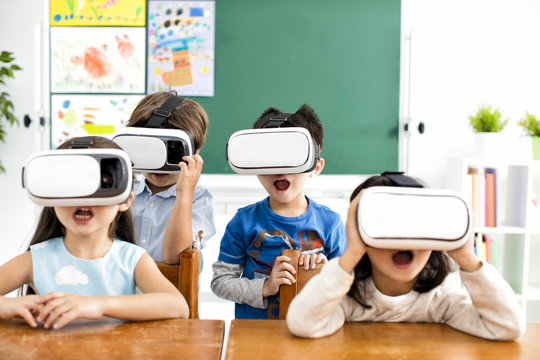
Access to Unreachable Locations: VR transports understudies to distant areas and periods. They can travel, learn about ancient civilizations, observe historical events, and cultivate cultural empathy.

Individualized Instruction: VR permits fitted growth opportunities to address individual issues. Platforms can be adapted to the abilities of students, providing individualized instruction, revisiting concepts, and immediate feedback.
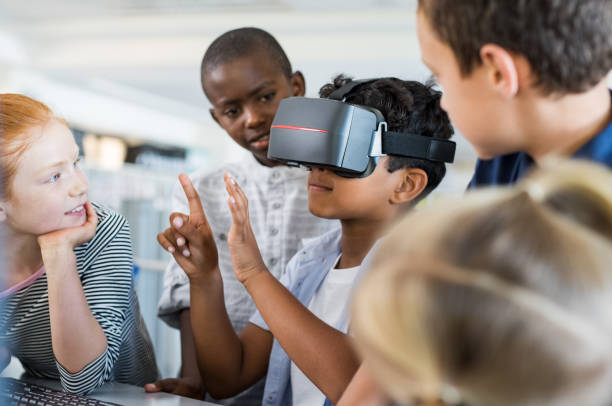
Social Learning and Collaboration: Students can collaborate, communicate, and solve problems in VR-facilitated collaborative learning experiences. They can interact with peers and experts from all over the world, fostering collaboration and cultural exchange.
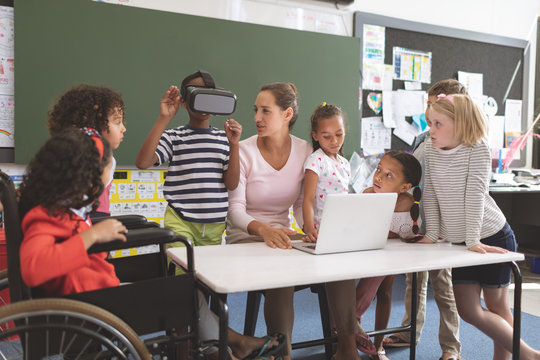
Better retention and motivation: VR further develops understudy inspiration and maintenance. Students are captivated by its immersive nature, which results in memorable experiences and increased engagement and knowledge retention.
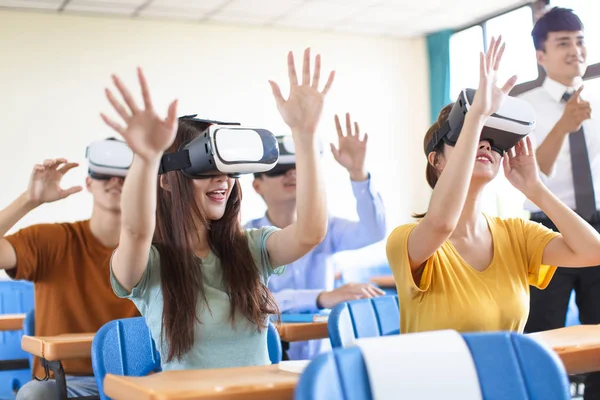
Virtual reality can possibly upset instruction by giving a vivid and intelligent growth opportunity. Using virtual reality in the classroom has numerous advantages. As this tech becomes more accessible, teachers should embrace its capability to establish a dynamic and viable learning climate that prepares understudies for future difficulties. Students can gain the knowledge and skills they need to succeed in the digital age by incorporating virtual reality into their classrooms.
I look forward to seeing the future with Virtual Reality in classrooms. We have the technology; we might as well use it.
Thank you!